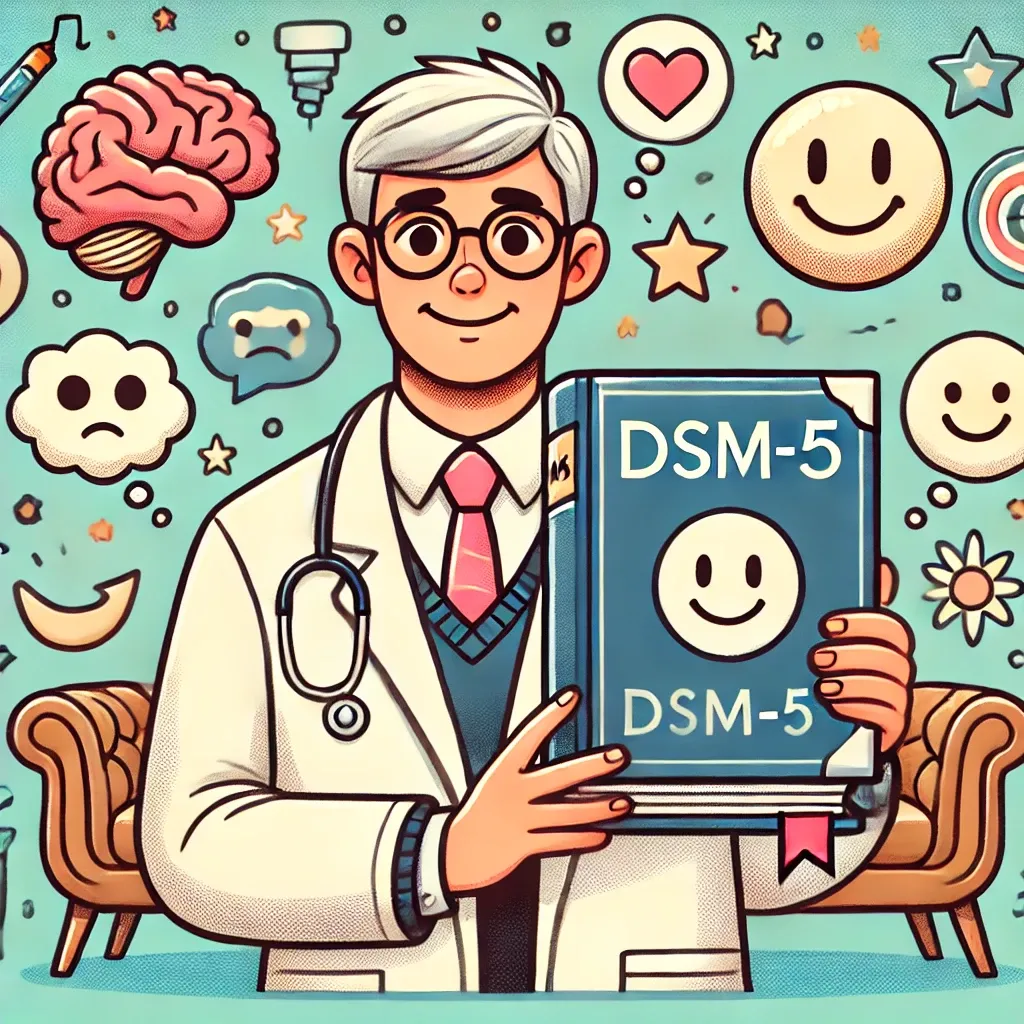Decoding the DSM-5: The Book That Defines Mental Health

Good morning, Varrock Street Journal Community!
As I prepare for my next rotation in psychiatry, I wanted to take a moment to explore one of the most essential tools used in diagnosing mental health conditions: The Diagnostic and Statistical Manual of Mental Disorders (DSM-5). Whether you’ve heard of it in passing or know someone whose diagnosis is based on it, the DSM-5 plays a crucial role in modern mental health care. In this next phase of my medical education, we will be shifting a lot of the learning material for our medicine and healthcare-based articles similar to what I am seeing and learning every day in this rotation. To best prepare our readers, I thought an introduction to this would be an excellent way to prepare all of you for this journey as well. In this edition, we’ll take a look at its history, evolution, importance, and ongoing research shaping its future.
The History and Evolution of the DSM
The DSM was first published in 1952 by the American Psychiatric Association (APA) as an effort to standardize psychiatric diagnoses. Prior to this, different institutions and doctors used inconsistent criteria, making research and treatment approaches fragmented.
Over the years, the DSM has gone through multiple revisions to incorporate new research and improve diagnostic clarity:
- DSM-I (1952): The first edition, largely influenced by psychoanalytic theory, categorized disorders into broad groups.
- DSM-II (1968): Expanded upon the initial classifications but still lacked strong scientific backing.
- DSM-III (1980): A major shift—this edition introduced more structured criteria, removing Freudian influences and paving the way for a more scientific approach.
- DSM-IV (1994): Further refined diagnostic categories and included culturally relevant perspectives.
- DSM-5 (2013): The most recent edition, which introduced changes such as spectrum-based diagnoses (e.g., autism spectrum disorder) and eliminated outdated terms.
The DSM-5 remains the gold standard in psychiatric diagnosis, though it is continuously being debated and updated as new research emerges.
Why Do We Use the DSM-5?
The DSM-5 serves as the primary classification system for mental health conditions in the U.S. and many other countries. Its importance lies in:
- Providing standardized diagnostic criteria to ensure consistency among clinicians.
- Facilitating research and treatment development by offering a common framework for studies.
- Aiding insurance and legal systems in recognizing and covering mental health conditions.
- Reducing stigma by defining mental disorders in a structured and research-backed way.
Despite its utility, the DSM-5 is not without controversy. Critics argue that some conditions are pathologized unnecessarily, while others feel that certain disorders lack precise definitions. The balance between medical necessity and over-diagnosis remains a topic of ongoing debate.
What the DSM-5 Covers
The DSM-5 categorizes mental disorders into broad sections, including:
- Neurodevelopmental disorders (e.g., autism spectrum disorder, ADHD)
- Schizophrenia spectrum and psychotic disorders
- Mood disorders (e.g., depression, bipolar disorder)
- Anxiety disorders (e.g., generalized anxiety disorder, panic disorder)
- Obsessive-compulsive and related disorders
- Trauma- and stressor-related disorders (e.g., PTSD)
- Substance-related and addictive disorders
- Personality disorders
Each disorder comes with specific diagnostic criteria that help clinicians determine if a patient meets the threshold for a given condition.
Spotlight on Future Research and Updates
The DSM is not a static document—research continues to shape future revisions. Some current areas of investigation include:
- Neuroscientific advancements: Understanding the brain’s role in mental health disorders.
- Genetic influences: How inherited traits affect mental illness.
- Cultural considerations: Ensuring diagnoses are applicable across diverse populations.
- The potential role of AI in assisting clinicians with diagnosis and treatment planning.
With ongoing research, future versions of the DSM will likely see even more refined diagnostic categories, improved reliability, and better integration of biological markers.
Here is a new podcast episode going over the evolution of psychiatry and how we enhanced our understanding of neurodiversity.
Check it out here: American Psychiatric Association DSM-5
Reflection Questions:
- Do you think mental health diagnoses should be more biological-based (like blood tests and imaging) or remain primarily behavioral?
- How do you think cultural and societal influences affect psychiatric diagnoses over time?
- What are your thoughts on AI potentially assisting in mental health diagnoses in the future?
That’s it for this edition of the Varrock Street Journal! I hope this breakdown of the DSM-5 provided insight into its role in psychiatry and mental health care. Looking forward to sharing more as I dive into my psychiatry rotation!
